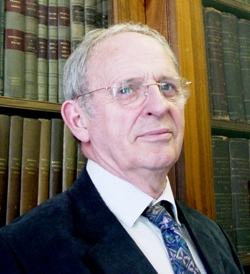
Applicants still need more guidance in preparing a Professional Report, in selecting supporting documents and CPD, writes Chartership Officer Bill Gaskarth.
Geoscientist 20.4 April 2010
In the
Professional Report the candidate states his/her case for becoming a Chartered Geologist. It should include a description of how, when and where they developed and obtained their professional skills and expertise. It is not simply an expansion of the employment record. The field of expertise in which candidates considers themselves competent, must be defined - and the limits of their knowledge/expertise spelt out. There should also be a statement of intent for further development of competence, with aims and objectives outlined. This Report should give a clear picture of the candidate’s skills, limitations and ambitions.
It is necessary for candidates to demonstrate their competence in a defined area of geological expertise. Work in associated areas, such as geotechnical engineering or contaminated land risk assessment, needs to be put into the geological context to emphasise geological competence in these areas. Remember that the application is for Chartered Geologist rather than Chartered Engineer or Chemist!
Supporting documents must be carefully selected to showcase, and give examples of, the skills, knowledge and judgement that are described in the Professional Report. These should clearly show the candidate’s true role/contribution to the interpretative reports submitted and are signed off by their line manager. The selection of the documents is itself a measure of professional skill.
It is important that candidates discuss their applications with their sponsor/mentor to get further guidance on the areas of competence claimed. The role of the sponsor/mentor is important here and they must have clear knowledge of the candidate’s skills, ability and experience as they are saying that, in their professional opinion, the candidate is qualified for Chartership.
CPD is a topic that causes applicants - and also some Chartered Geologists - considerable grief. It is not simply a list of courses/lectures attended; it must show some structure, to indicate that thought has gone into the development of expertise and career. It is too easy just to aim to achieve the total points required as shown on the website for CPD records. This is not really what CPD is about. It is about learning and professional development. We all do CPD in different ways. A good, useful CPD record will show aims and objectives for CPD activities over the year; a description of what was done and then an appraisal/reflection of what has been achieved. Much of this in early career years may well be part of an employer's training scheme. Early career CPD will therefore commonly be a steep learning curve, with training courses involved, but it will be structured to ensure that there are aims and objectives and appraisal of achievements. In later years of a career CPD will change and the learning and development will occur in different ways.
For mid to late career geologists, the learning curve is more of a plateau, with increases in gradient where learning is developed into new areas. Many will spend their CPD time not only keeping up to date with techniques, regulations etc., but also in promoting the profession (giving talks to schools; Geological Society Committee work, mentoring, scrutineering). For all, however, a big part will be CPD in professional practice. This is not one’s day-to-day work, but the learning undertaken prior to starting a project, the learning while doing the work, and then assessment of what has been achieved in terms of learning and development. George Tuckwell discusses CPD in his article “
It is what you know” .
The above notes are offered to give some further clarification as to what it is and to emphasise that structured learning is the main objective. We all carry out CPD, sometimes subliminally, but reflection on what has been learned over the year sometimes is missing.